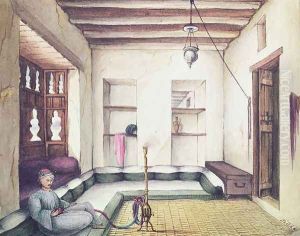Sir John Kirk Paintings
Sir John Kirk was not an artist in the traditional sense of painting, sculpture, or visual arts, but his life's work in the field of exploration, diplomacy, and natural science had a significant impact on the way we perceive and engage with the world, influencing cultural and scientific knowledge in the 19th and early 20th centuries. Born on December 19, 1832, in Angus, Scotland, Kirk was a pioneering figure best known for his association with David Livingstone, the famous explorer, and his own contributions to the exploration of Africa, particularly in what is now Tanzania. Kirk studied medicine at the University of Edinburgh, where he developed a keen interest in botany. This dual expertise in medicine and botany proved invaluable when he joined Livingstone's Zambezi Expedition in 1858 as a medical officer and naturalist. Over the years, Kirk collected numerous specimens of plants and animals, contributing significantly to European knowledge of African flora and fauna. His work laid the foundations for future botanical and zoological studies in Africa. Aside from his scientific contributions, Kirk played a crucial role in the abolition of the East African slave trade. As British Consul in Zanzibar (from 1873 to 1887), he used his diplomatic skills to negotiate with Sultan Barghash bin Said, leading to the Sultan's decree that effectively ended the notorious slave market in Zanzibar in 1873. Kirk's efforts in this area were instrumental in curtailing the slave trade on the East African coast and are among his most notable humanitarian achievements. Kirk's life was not only about exploration and science. He was deeply involved in the political and diplomatic affairs of East Africa, influencing British policy in the region. His reports and correspondence provided valuable insights into the political and social conditions of East Africa during the late 19th century, making him a key figure in the British Empire's expansionist policies in Africa. Sir John Kirk passed away on January 15, 1922, leaving behind a legacy that spanned scientific discovery, humanitarian efforts, and diplomatic achievements. His work remains a testament to the multidisciplinary approach to understanding and engaging with the world, making him a notable figure not only in the history of exploration but in the broader context of 19th-century science and politics.
